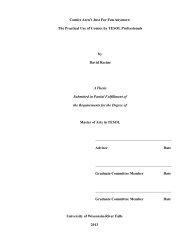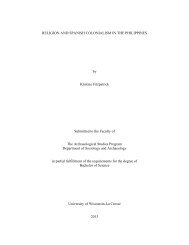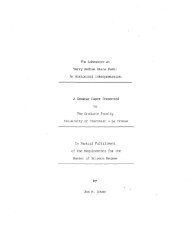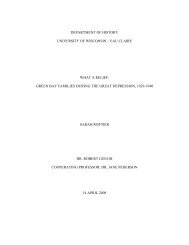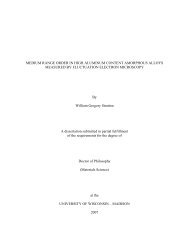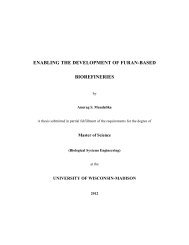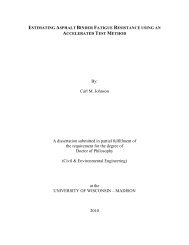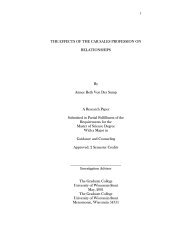The effectiveness of eye movement desensitization and reprocessing
The effectiveness of eye movement desensitization and reprocessing
The effectiveness of eye movement desensitization and reprocessing
Create successful ePaper yourself
Turn your PDF publications into a flip-book with our unique Google optimized e-Paper software.
Eye Movement 18<br />
caused by the trauma <strong>of</strong> assault or natural disaster (Chemtob, Nakashima, Hamada& Carlson,<br />
1996; Cocco & Sharpe, 1993; Datta <strong>and</strong> Wallace 1994, Greenwald & Elrod 1999; Shapiro, 1991;<br />
Tinker & Wilson, 1999); f) sexual assault victims who are now able to lead normal lives <strong>and</strong><br />
have intimate relationships (Hyer,1995; Parnell, 1994, 1999; Puk, 1991; Shapiro, 1989, 1991,<br />
1994; Wolpe & Abrams, 1991); <strong>and</strong> g) accident, surgery, <strong>and</strong> burn victims who were once<br />
emotionally or physically debilitated <strong>and</strong> who are now able to resume productive lives (Blore,<br />
1997; Hassard, 1993; McCann, 1992; Puk, 1992; Solomon & Kaufman, 1994).<br />
<strong>The</strong>re are more controlled studies on EMDR than on any other method used in the<br />
treatment <strong>of</strong> PTSD (Shapiro, 1995, 1996; Spector & Read, 1993; Van Etten & Taylor, 1998). A<br />
literature review indicated only six other controlled clinical outcome studies (excluding drug<br />
therapy) in the entire field <strong>of</strong> PTSD (Solomon, Gerrity, <strong>and</strong> Muff, 1992). <strong>The</strong> following section<br />
includes a discussion <strong>of</strong> the studies that have been conducted to evaluate the <strong>effectiveness</strong> <strong>of</strong><br />
EMDR.<br />
Controlled Studies with Civilians<br />
A comparison <strong>of</strong> EMDR, supportive crisis counseling <strong>and</strong> non-treatment controls with a<br />
one month <strong>and</strong> three month follow-up, was conducted by Levin, Grainger, Allen-Byrd, <strong>and</strong><br />
Fulcher (1994). This controlled study <strong>of</strong> 45 Hurricane Andrew (Florida) survivors found<br />
significant differences in scores on the Subject Unit <strong>of</strong> Disturbance (SUD) <strong>and</strong> Impact <strong>of</strong> Event<br />
Scales (IES), indicating that EMDR is more successful in the treatment <strong>of</strong> natural disaster (single<br />
trauma) victims than the other treatments used (image habituation training <strong>and</strong> applied muscle<br />
relaxation). A decrease in symptomology was accomplished with only one EMDR session. In<br />
another comparative study, Wilson, Covi, Forster, <strong>and</strong> Silver (1994) r<strong>and</strong>omly assigned 18



